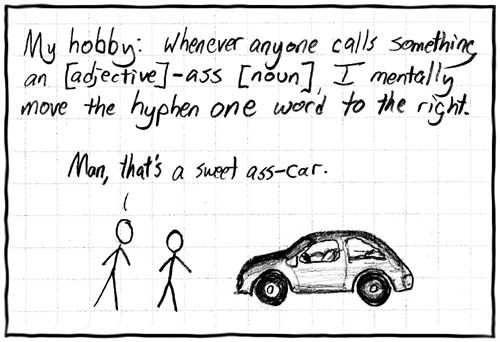If a customer ordered a small coke we had to ask them if a regular was ok. Failure to do so in earshot of a Manager would get you a verbal warning.
Predictably, most customers thought we were trying to upsell them and there would be a long discussion while we tried to explain that regular was the smallest without actually using the S word. Even more fun after the pubs closed and the customers were mostly drunk.
I don’t recall that we had to do that. If they asked for a small, we’d just give them a “regular”.
Here is a McDonald’s wall menu from 1973. The have “fries” and “large fries”
Nobody’s mentioned this yet, that I’ve seen – maybe it’s so well known as to be, um, hopelessly inane. Still, it might as well go on the record. The name of the coffee serving with the lowest volume at Starbucks is “Tall”. The next serving size is (translated) “Great”, and the greatest volume serving is (translated from Italian) “Twenty” [as in ‘20 ounces’].
But you all knew that.
Correcting a customer’s use of normal words to use corporate buzz words is very off-putting. Not even Starbucks insists on that.
When I’m in Starbucks, which is when I’m on the road, only, I just hand them my travel mug and say “coffee with room”. I am charged variously depending on what the barista’s best guess is. But since it’s just coffee it’s not that much money. They don’t make their money on plain coffee.
How about some Big Ass Fries?
What I have heard is that the drink names (in addition to create atmosphere) were chosen because the sounded distinctly different so that when they were called out, there couldn’t be confusion on what the cashier was saying.
Atmosphere appears to be the major reason.
Note that Starbucks started out with small, tall, and grande, but when they added Venti they dropped the small. You might confuse small and tall, but I’m just cynically going to assume that they dropped the small for the same reason that every other chain dropped the small.
If you’ve only got two, the odd one is either ‘small’ or ‘large’, and I know which way I’d label them.
It’s ‘regular’, ‘medium’, and ‘large’ that (very slightly) bothers me - other than price, there is no obvious signal that ‘medium’ is bigger than ‘regular’. Heck, label them ‘regular’, ‘large’ and ‘extra large’ (or ‘big ass’).
You never see a small one labeled “minuscule”, and yet that would surely be memorable.
“Dry ice” was originally a trademark of the DryIce corporation.
Heck, I remember grocery shopping with my mom back in the 70s and noticing that the smallest sized box of laundry detergent was “Giant Size”.
As an aside, here in the UK it’s now very common to see “small” meals on pub menus. Sometimes they’re called light bites; in this example they’re called small plates.
OK, so that’s a pub not a burger joint - but does this happen in the US, or does it strike you as something unusual?
j
In a tapas joint or a bar - all the time. In a restaurant - almost never.
No, it happens in the US (also called tapas). Usually by an upscale restaurant offers them. The idea is you buy a bunch of small items, usually to share with friends, instead of one big entree.
That’s at least a thing in Germany. Many non-franchise restaurants have Kinderteller and/or Seniorenteller, kid’s plates and senior plates. Kid’s plates are often popular kid’s dishes like Currywurst, Schnitzel, fries or fish sticks in small portions. And if you want a reduced meal from the menu, you’ll ask for the senior portion, called this because obviously it’s most popular with older people. My mother always orders this way, regular portions are just too much for her.
The idea is you buy a bunch of small items, usually to share with friends, instead of one big entree.
No, that’s not the idea here. That small plate (or light bite) is your lunch or dinner, just a smaller version of a regular meal. It’s an option to eat less.
j
ETA @EinsteinsHund - you see senior portions less often in UK pubs than you used to. I think small plates (etc) is the new non-age-specific version.
Probably that’s what it’s called in big German cities too mostly these days, but here in the sticks you’ll still see “Seniorenteller” on the menu. But yeah, they often have the neutral disclaimer “you can get all dishes in reduced portions”.
No, that’s not the idea here. That small plate (or light bite) is your lunch or dinner, just a smaller version of a regular meal. It’s an option to eat less.
Buffalo had a small plates restaurant with exactly this concept. It’s no longer around. For what it’s worth, tapas restaurants have become much more popular and probably fill the niche better.
